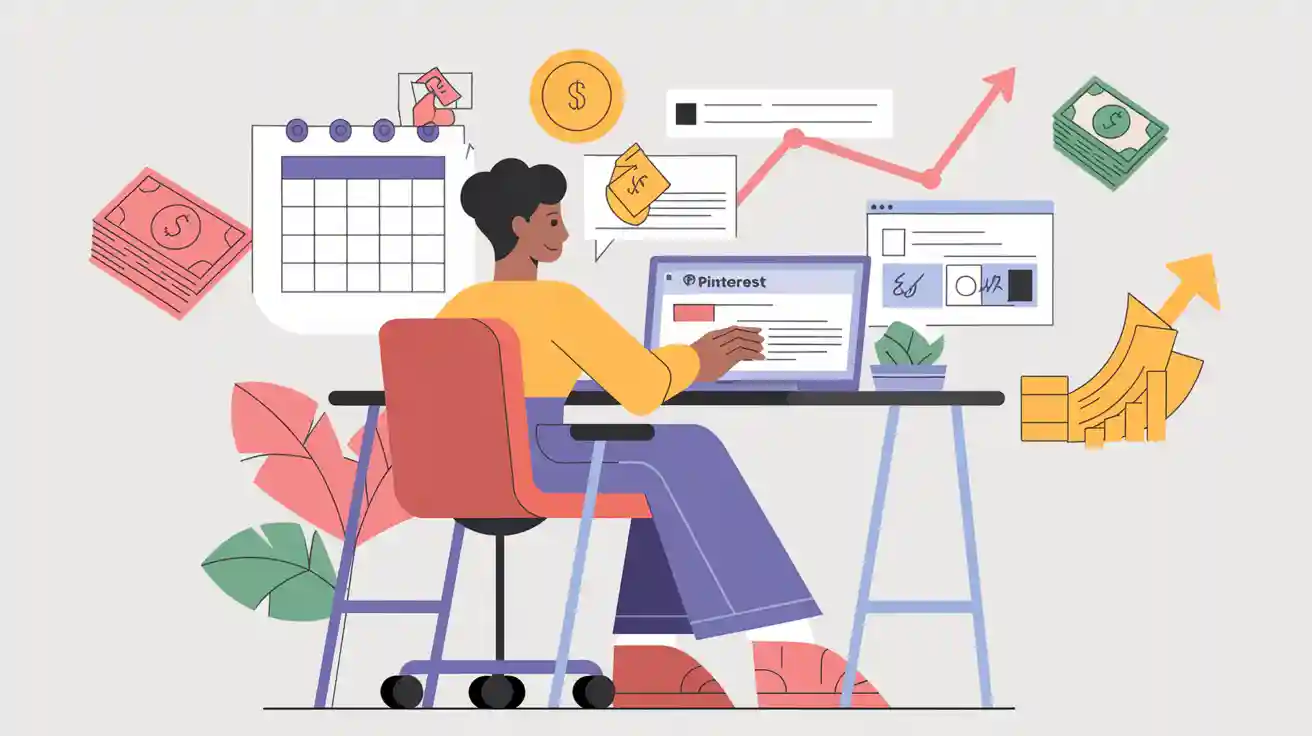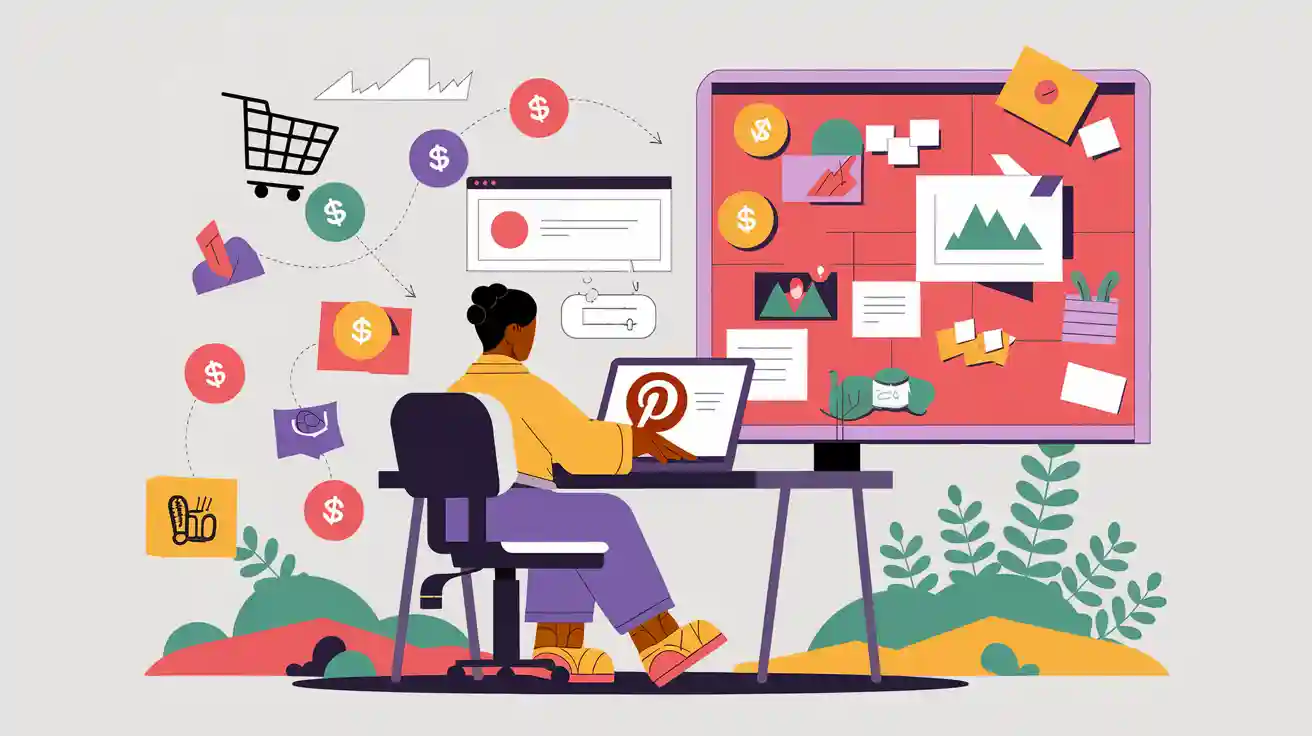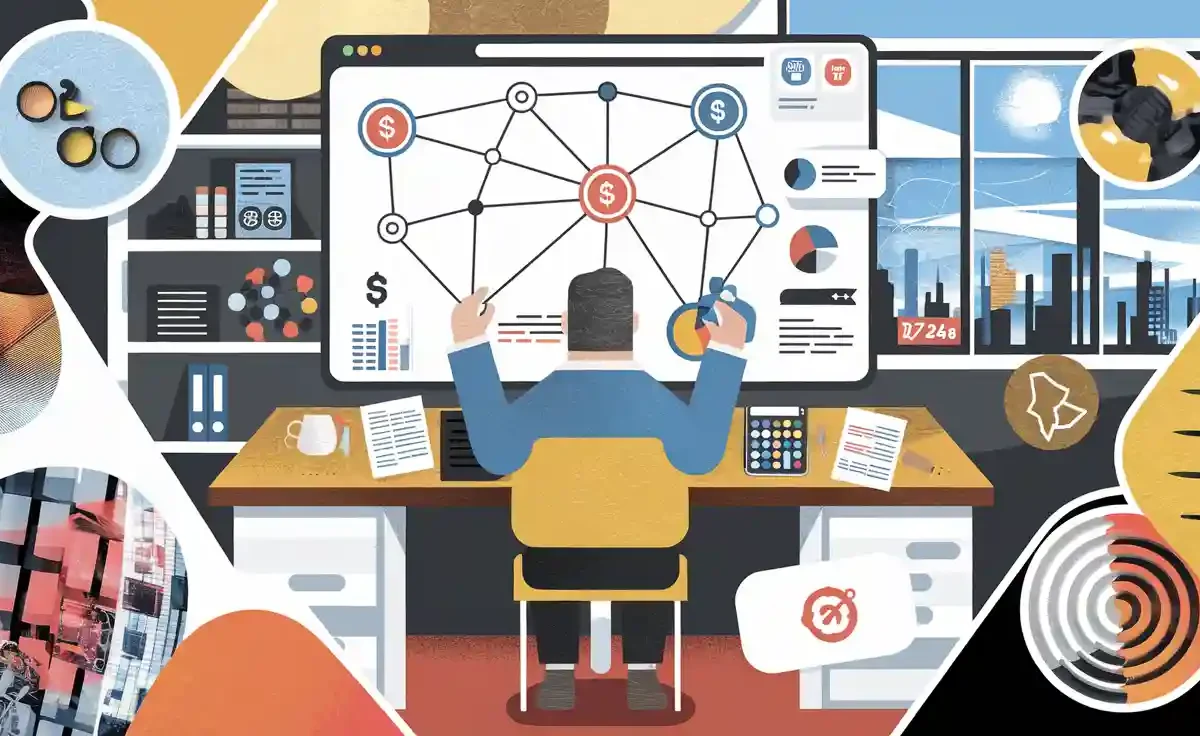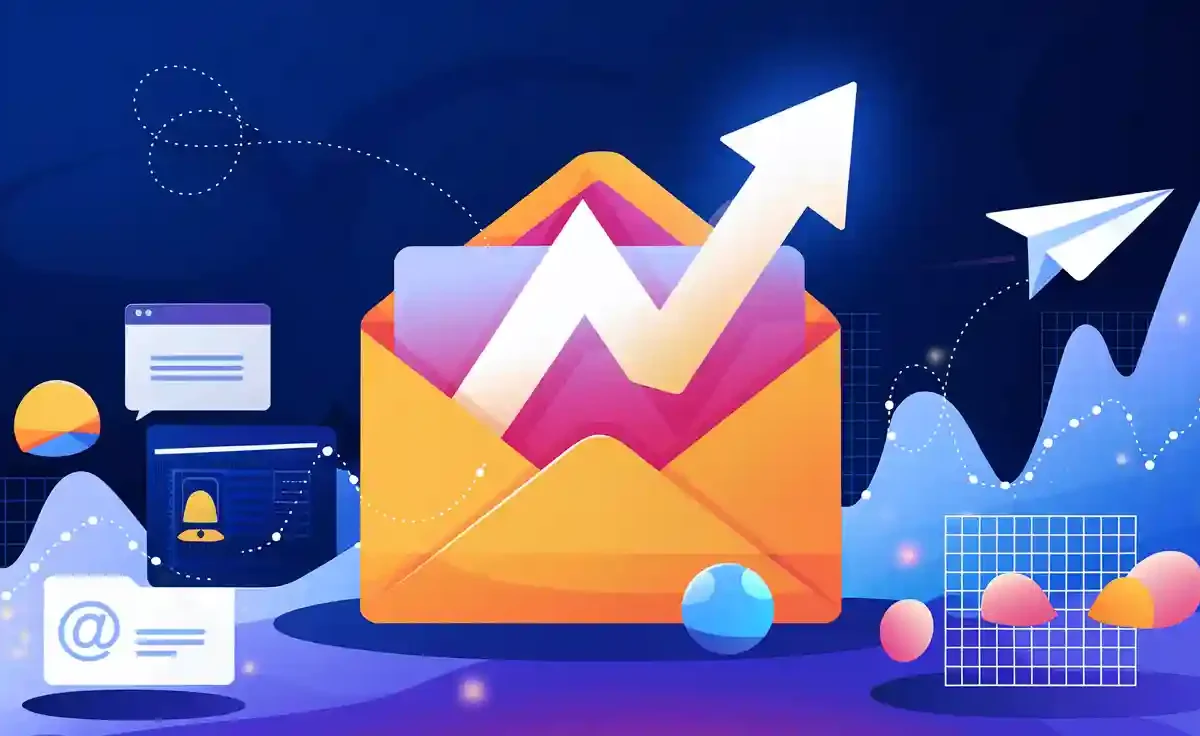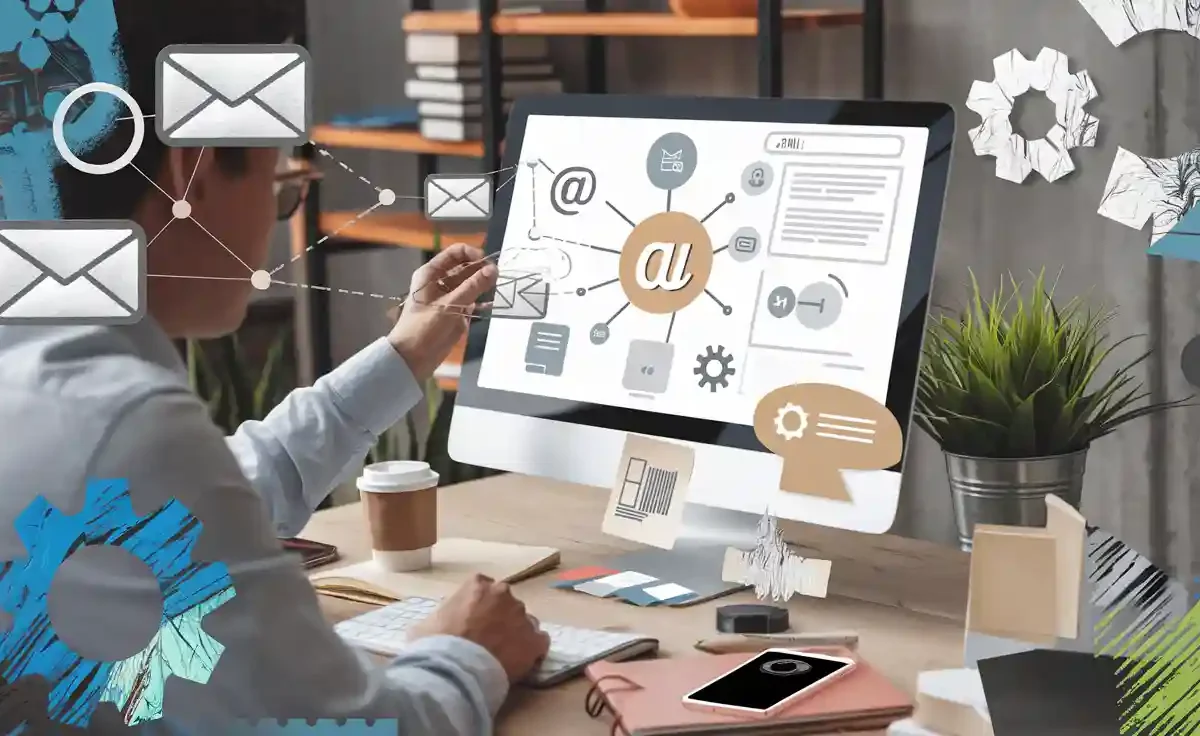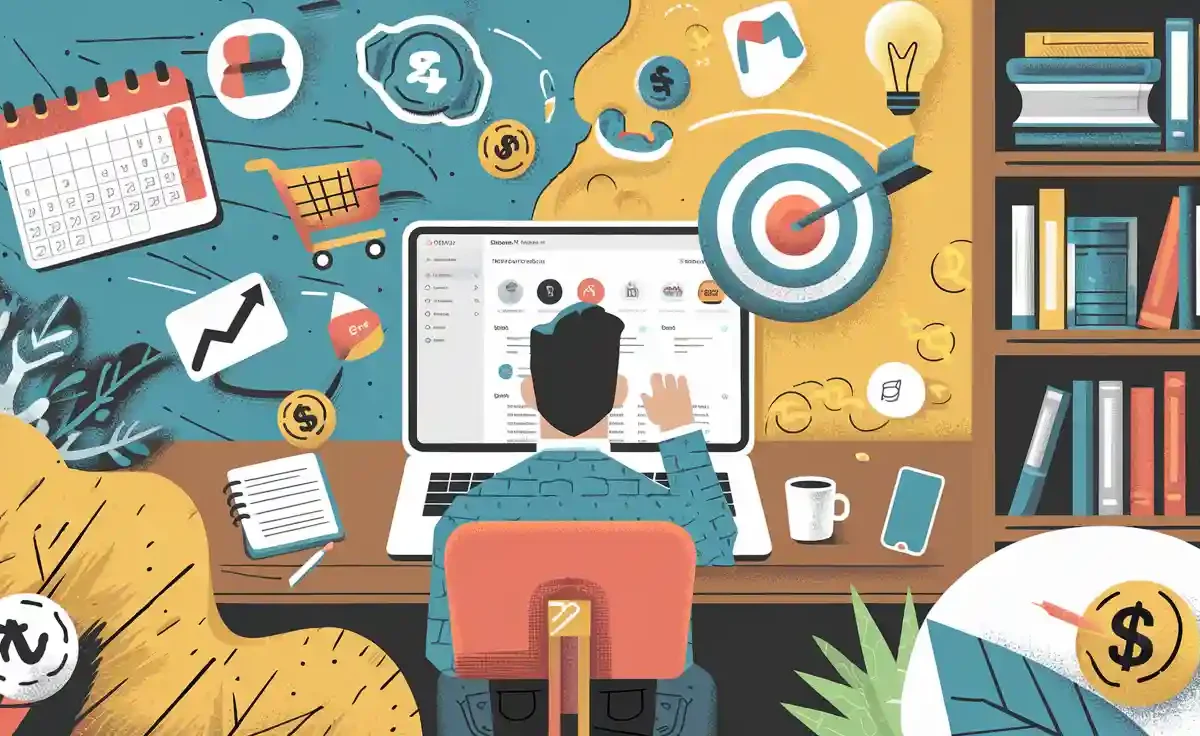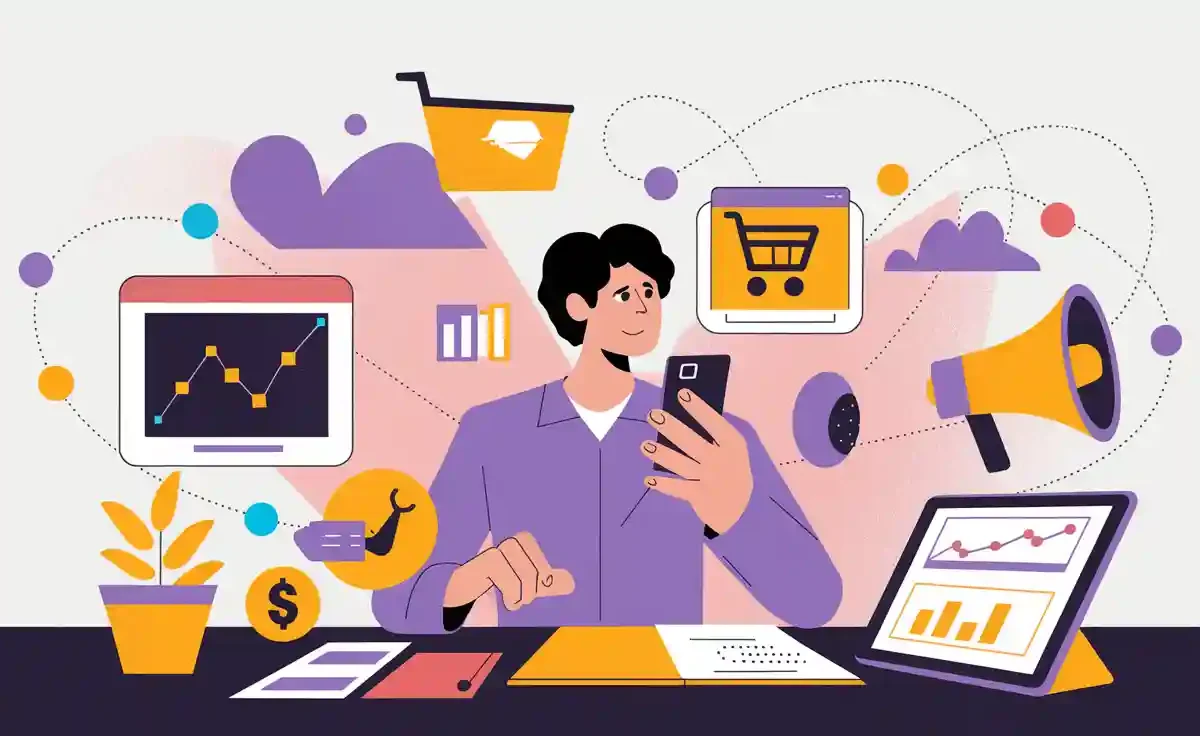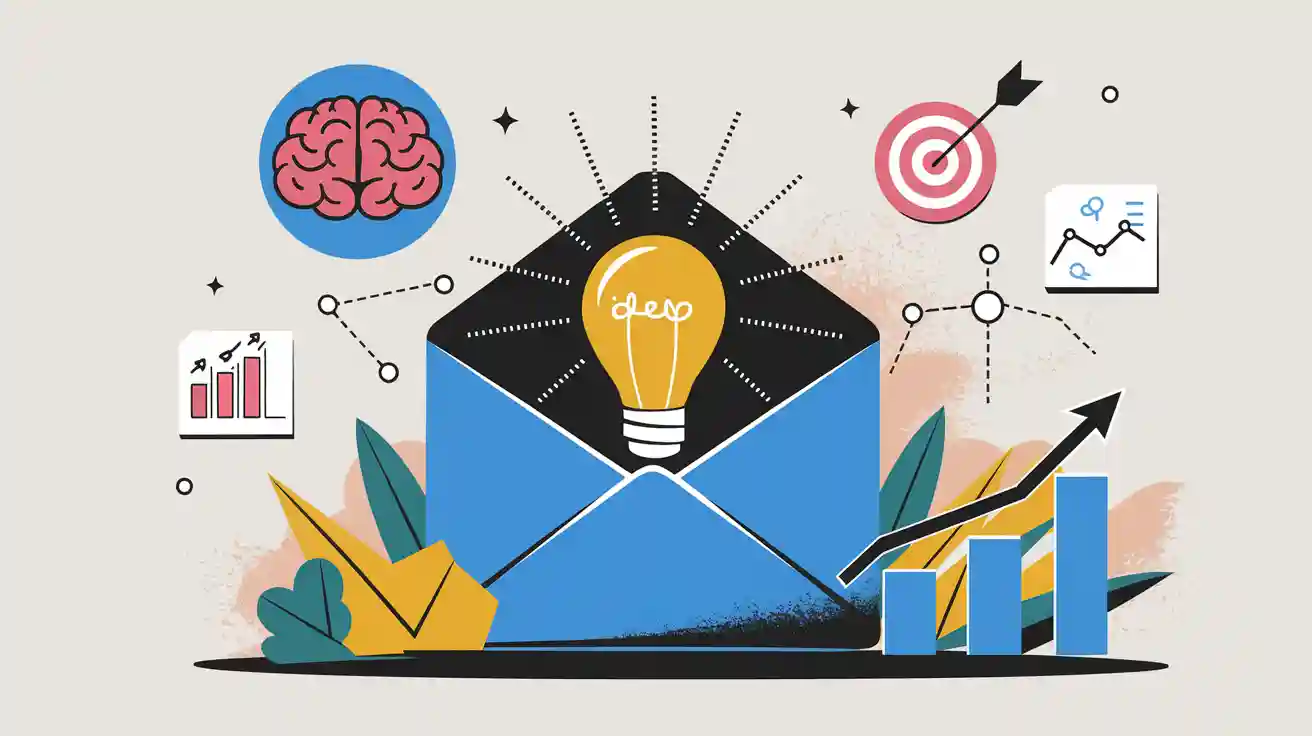
Getting people to click on your email isn’t just about luck—it’s about strategy. Click-through rates are one of the most critical metrics in email marketing. They don’t just show engagement; they directly impact your email conversion rate. For example, personalized calls to action can boost conversions by a staggering 202%. And when marketers use segmented campaigns, they see a 760% increase in email revenue. These numbers prove that improving clicks can transform your results.
Psychology hacks make this process even more effective. Simple tweaks, like using curiosity or creating urgency, can grab attention and drive action. Imagine a headline like “Guess What’s Driving 60% of Our Sales This Month?” It’s hard to resist opening that email, right? By understanding how people think through psychology hacks, you can craft emails that not only get opened but also deliver results.
Key Takeaways
Give something useful first to gain trust. This helps readers trust you and click your email.
Make your emails personal so readers feel special. Custom messages make people more likely to click.
Show proof with reviews or success stories. This makes you believable and gets readers to act.
Use urgency by saying things like ‘offer ends soon.’ This makes people act quickly and click more.
Finish with a clear action step. A simple CTA tells readers what to do next and boosts clicks.
1. Use Reciprocity
Have you ever felt the urge to return a favor after someone did something nice for you? That’s the rule of reciprocity in action. It’s a powerful psychological principle that you can use to make your emails more engaging and effective.
In email marketing, reciprocity works when you give your audience something valuable first. This could be a free resource, a helpful tip, or even an exclusive discount. For example, imagine sending an email with a subject line like, “Here’s a Free Guide to Double Your Productivity.” When readers open it and find a genuinely useful guide, they’re more likely to feel a sense of obligation to click on your call-to-action or explore your offer.
The key is to make your gift feel personal and relevant. A generic freebie won’t cut it. Think about what your audience truly needs or wants. If you’re targeting busy professionals, offer a time-saving tool. If your audience loves fitness, share a free workout plan. By tailoring your emails to their interests, you’ll build trust and encourage action.
Another tip? Be clear about the value of what you’re offering. Instead of saying, “Here’s a free eBook,” try, “Download Our Free eBook to Save 10 Hours a Week.” This approach highlights the benefit, making your email irresistible.
Remember, the rule of reciprocity isn’t about manipulation. It’s about creating a win-win situation. When you give first, your audience feels appreciated and motivated to engage with your email.
2. Personalize Your Emails
Imagine receiving an email that starts with, “Hi [Your Name], we’ve got something special just for you!” Doesn’t it feel more engaging than a generic “Dear Customer”? Personalization is one of the most effective ways to grab attention and boost your click rates. It makes your audience feel seen and valued, which is key to building trust.
Personalized emails go beyond just adding a name. You can tailor content based on your audience’s preferences, behavior, or past interactions. For example, if someone recently browsed your website for running shoes, send them an email featuring your latest athletic footwear collection. This approach shows you understand their interests and increases the chances they’ll click.
The numbers back this up. Did you know that 74% of marketers say targeted personalization boosts customer engagement? Even better, personalized campaigns can lead to a 760% increase in email revenue. That’s not all—emails with personalized calls to action convert 202% better than generic ones. These stats prove that personalization isn’t just a nice touch; it’s a game-changer.
Statistic | Description |
|---|---|
74% of marketers | Report that targeted personalization boosts customer engagement. |
760% increase | Personalized campaigns can lead to a 760% increase in email revenue. |
202% better conversion | Personalized calls to action convert 202% better than standard ones. |
To create a winning email marketing script, start by segmenting your audience. Group them by demographics, purchase history, or even location. Then, craft messages that speak directly to each group. For instance, offer exclusive deals to loyal customers or recommend products based on past purchases. This level of detail makes your emails feel like they were written just for them.
Remember, personalization isn’t just about data—it’s about connection. When you take the time to understand your audience, you’ll create emails that resonate and drive results.
3. Leverage Social Proof

Have you ever bought something because others raved about it? That’s the power of social proof. People trust what others recommend, especially when they see real results. You can use this psychological principle to boost your email click rates and build credibility.
Start by including testimonials in your emails. These could be quotes from happy customers or success stories that highlight how your product or service solves problems. For example, “I doubled my sales in just one month using this tool!” adds authenticity and encourages readers to take action. Testimonials from influencers work even better. If someone your audience admires endorses your product, they’re more likely to trust it.
Another way to use social proof is by showcasing numbers. Highlight how many people have benefited from your offer. For instance, “Join over 10,000 satisfied customers who’ve transformed their productivity!” This creates a sense of belonging and reassures readers that they’re making a smart choice.
You can also add urgency by showing live stats. Think about phrases like, “5 spots left!” or “20 people just signed up!” These make your email feel dynamic and encourage immediate clicks.
Don’t forget to make your social proof visually appealing. Use images, star ratings, or even video clips to grab attention. A picture of a smiling customer or a quick testimonial video can make your email stand out.
Social proof isn’t just about bragging. It’s about showing your audience that others trust you, so they can too. When you include it in your emails, you’ll see more clicks and stronger engagement.
4. Create a Sense of Scarcity
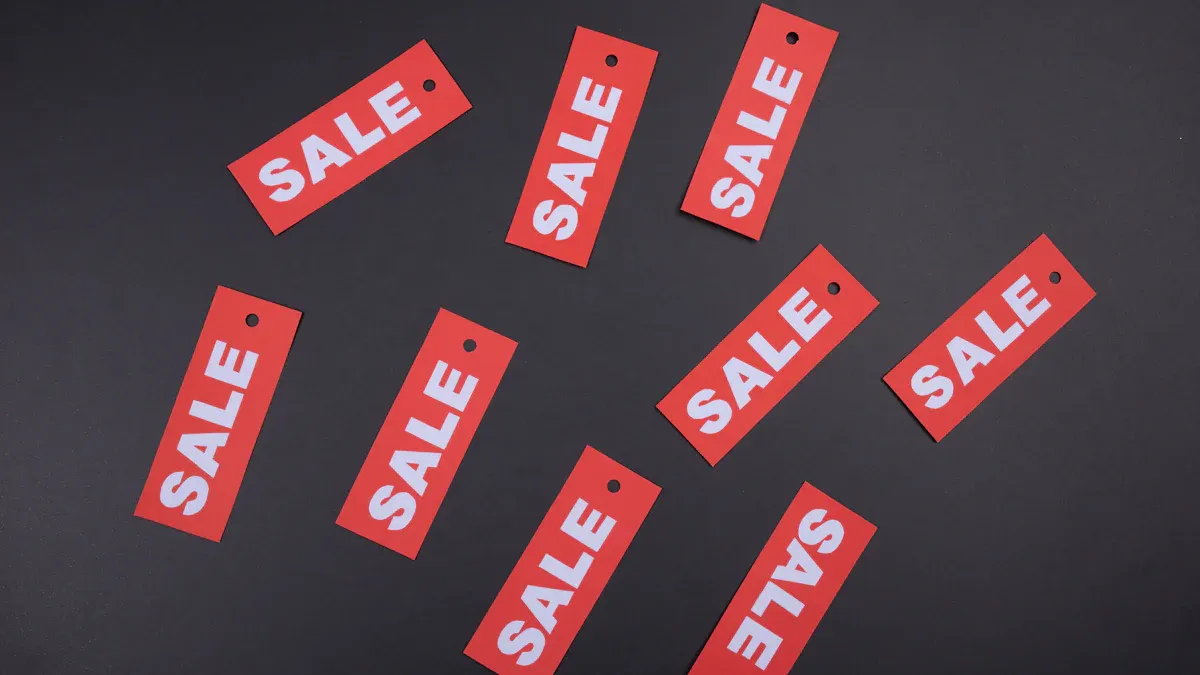
Have you ever rushed to grab a deal because it was about to expire? That’s the power of scarcity. When something feels limited, it becomes more desirable. You can use this psychological trigger in your emails to create urgency and drive clicks.
Adding phrases like “Only 3 left in stock!” or “Offer ends tonight!” can make your readers act quickly. Limited-time offers, for example, increase purchase likelihood by 33%. Why? People don’t want to miss out. This taps into the fear of missing out, making your email irresistible.
Urgency works wonders in subject lines too. Emails with urgent subject lines see 16% higher transaction rates. For instance, “Last Chance: 50% Off Ends at Midnight” grabs attention and encourages immediate action. Including urgency in your email content can also boost click-to-open rates by 14% and transaction-to-click rates by 59%.
Here are some quick ways to create scarcity in your emails:
Countdown Timers: Add a timer to show how much time is left for an offer.
Limited Stock Alerts: Mention how few items remain.
Exclusive Deals: Highlight offers available only to a select group.
Promotional emails with urgency often double transaction rates compared to average marketing emails. This shows how effective scarcity can be in driving results.
Remember, the key is to stay authentic. Don’t fake scarcity. If your audience catches on, you’ll lose their trust. Instead, focus on real limitations, like seasonal sales or exclusive product launches. When done right, scarcity can turn your emails into powerful tools for engagement.
5. Use Curiosity
Curiosity is a powerful motivator. When you spark someone’s interest, they can’t help but want to know more. You can use this psychological trigger to make your emails irresistible and boost click-through rates.
Start with an intriguing subject line. Think about questions or teasers that create a sense of mystery. For example, “What’s the Secret Behind Our Best-Selling Product?” or “You Won’t Believe What’s Inside This Email.” These phrases tap into your audience’s natural desire to fill information gaps. When they see a subject line like this, they’ll feel compelled to open your email and find out more.
Inside the email, keep the curiosity alive. Use preview text or the opening sentence to hint at something exciting without giving it all away. For instance, “We’ve uncovered a strategy that’s doubling results for thousands of users—are you ready to try it?” This approach keeps readers engaged and encourages them to click through to learn the full story.
Here’s why curiosity works so well:
Emails tailored to your audience’s preferences or past behavior are more likely to grab attention.
Intriguing subject lines and teasers create a desire to discover more, significantly increasing click-through rates.
To make curiosity even more effective, segment your audience. When you know what your readers care about, you can craft emails that feel personal and relevant. For example, if someone recently browsed your travel deals, send them an email with the subject line, “The Top 3 Destinations You Can’t Miss This Summer.”
Curiosity doesn’t just grab attention—it keeps it. By using this strategy, you’ll create emails that stand out in crowded inboxes and drive meaningful engagement.
6. Appeal to Loss Aversion
Nobody likes losing something valuable. This is where the psychological principle of loss aversion comes into play. People are more motivated to avoid losses than to gain something of equal value. You can use this to your advantage in your email campaigns by tapping into the fear of loss.
Start by highlighting what your audience might miss out on if they don’t act. For example, instead of saying, “Get 20% off,” try, “Don’t miss your chance to save 20%—offer ends tonight!” This subtle shift creates urgency and makes readers feel like they’re losing out if they don’t click.
Here are a few ways to apply loss aversion in your emails:
Limited-Time Offers: Use phrases like “Only available for 24 hours” or “Sale ends at midnight.”
Exclusive Access: Frame your offer as something special they’ll lose if they don’t act, like “This deal is only for our VIP members.”
Scarcity Alerts: Mention low stock levels, such as “Only 3 items left in stock!”
Pro Tip: Combine loss aversion with a countdown timer in your email. Seeing the seconds tick away amplifies the fear of loss and drives immediate action.
Loss aversion works because it triggers an emotional response. When people feel they’re about to lose something, they act faster. Use this principle carefully, though. Overusing it can make your emails feel pushy or insincere. Keep it authentic and relevant to your audience.
By appealing to the fear of loss, you’ll create emails that not only grab attention but also drive clicks. Your readers won’t want to miss out, and that’s exactly what you want.
7. Simplify with Cognitive Fluency
Ever felt overwhelmed by a cluttered email? You’re not alone. People process emails quickly, often skimming for key details. That’s why simplifying your email design and content can dramatically improve click-through rates. Cognitive fluency, the idea that people prefer things that are easy to understand, plays a big role here.
Start by focusing on one clear goal for each email. Too many options can confuse your readers and reduce engagement. Instead, use a single, well-defined call-to-action (CTA) that tells them exactly what to do. For example, “Download Your Free Guide” works better than vague phrases like “Learn More.”
Here’s how you can simplify your emails for better results:
Use Clear CTAs: Stick to one action per email to avoid overwhelming your audience.
Be Specific: Tell readers what they’ll gain by clicking. For instance, “Save 20% Today” is more compelling than “Check Out Our Sale.”
Position CTAs Strategically: Place buttons or links above the fold so they’re easy to spot.
Keep the Design Clean: Use white space and simple fonts to make your email visually appealing.
Principle | Explanation |
|---|---|
Simplifying choices with a single CTA focuses attention and drives action, enhancing engagement. | |
Specificity in CTAs | Well-defined CTAs clarify expectations, improving the likelihood of clicks. |
Action-oriented Language | Using compelling language inspires immediate responses, making emails more effective. |
Placement of CTA Buttons | Positioning buttons above the fold increases visibility and usability, positively impacting rates. |
Valuable Incentives | Offering discounts or free trials encourages clicks on CTAs. |
Cognitive biases also come into play. Curiosity can make your subject lines irresistible, while loss aversion creates urgency. For example, “Don’t Miss Out on This Exclusive Offer” combines both principles to grab attention and drive action.
By simplifying your email, you make it easier for readers to engage. When your message is clear and visually clean, they’re more likely to click and take the next step.
8. Use the Power of Exclusivity
Everyone loves feeling special. When you make your audience feel like they’re part of an exclusive group, they’re more likely to engage with your email. Exclusivity taps into the fear of missing out (FOMO), a powerful psychological trigger that drives action.
Start by framing your offer as something not everyone can access. Use phrases like “For VIP Members Only” or “Exclusive Invite Just for You.” This makes your readers feel valued and encourages them to click. For example, an email with the subject line “Your Early Access to Our New Collection” creates excitement and urgency.
Here’s why exclusivity works so well:
It creates urgency, prompting immediate action.
FOMO enhances click-through rates by emphasizing limited-time offers.
Readers engage more when they feel they might miss a special deal.
You can also use behavioral data to make your emails feel even more personal. Track your audience’s browsing activity to understand their interests. Then, craft emails with dynamic content tailored to their preferences. For instance, if someone recently viewed your premium products, send them an email with the subject line, “Exclusive Offer on the Items You Love.”
Adding urgency to your exclusive offers can amplify results. Phrases like “Only 3 spots left!” or “Offer ends in 24 hours” encourage readers to act fast. Just make sure your claims are genuine. Misleading urgency can damage trust and hurt your brand.
Exclusivity isn’t just about limiting access—it’s about making your audience feel special. When you combine this with personalized content and urgency, your email campaigns will stand out and drive more clicks.
9. Add Humor
Who doesn’t love a good laugh? Humor is a fantastic way to make your emails stand out in crowded inboxes. It grabs attention, builds a connection, and makes your message more memorable. When you make someone smile, they’re more likely to engage with your content—and click through.
Adding humor doesn’t mean you need to be a stand-up comedian. A clever pun, a lighthearted joke, or even a funny GIF can do the trick. For example, if you’re promoting a coffee subscription, you could write, “Life happens. Coffee helps. Click here to make mornings less scary.” It’s simple, relatable, and gets the point across.
Here are some tips to sprinkle humor into your emails:
Know Your Audience: Tailor your humor to their preferences. A joke that works for a younger crowd might not land with professionals.
Keep It Relevant: Make sure the humor ties back to your message. Random jokes can confuse readers.
Use Visuals: Funny images or memes can add personality to your email. Just make sure they align with your brand.
Pro Tip: Use humor sparingly. Too much can distract from your main goal. A little goes a long way in making your email feel fresh and engaging.
Humor also humanizes your brand. It shows there’s a real person behind the email, not just a faceless company. This builds trust and makes readers more likely to click. So, don’t be afraid to have a little fun with your emails. A well-placed joke might just be the secret ingredient to boosting your click rates.
10. End with a Strong Call-to-Action
Every email needs a clear purpose. Without a strong call-to-action (CTA), your readers might not know what to do next. A well-crafted CTA guides them toward the desired action, whether it’s making a purchase, signing up, or downloading a resource.
CTAs work best when they’re simple and direct. Instead of overwhelming your audience with multiple options, focus on one clear goal. For example, “Get Your Free Trial” is far more effective than “Explore Our Products and Services.” Emails with a single CTA can increase clicks by 371% and sales by an incredible 1617%. That’s the power of clarity.
Statistic Description | Percentage Increase |
|---|---|
Emails with a single CTA can increase clicks | 371% |
Emails with a single CTA can increase sales | 1617% |
Emails with a single CTA button increase clicks | 28% |
To make your CTAs stand out, use action-oriented language. Phrases like “Start Saving Today” or “Claim Your Spot Now” create urgency and excitement. Position your CTA button where it’s easy to find—preferably above the fold. A strategically placed button can boost clicks by 28%.
Don’t forget to include CTAs that align with your audience’s needs. If your email offers a discount, your CTA could say, “Unlock 20% Off Now.” This approach ties the action directly to the benefit, making it irresistible.
A strong CTA isn’t just about driving clicks. It’s about creating a seamless experience that leads your readers to take the desired action. When you include CTAs that are clear, compelling, and relevant, your emails will deliver better results.
These 10 psychology hacks can transform your email marketing strategy. With 4 billion daily email users and 37% of brands increasing their email budgets, boosting engagement is more important than ever. By applying these hacks, you’ll see improvements in click-through rates, email conversion rate, and overall customer engagement.
Experiment with different approaches to find what resonates with your audience. Personalization, emotional triggers, and clear calls-to-action are just a few ways to drive meaningful conversions. Track key metrics like open rates, click-through rates, and conversion rates to measure success.
Pro Tip: Refine your strategy based on what works best. Small tweaks can lead to big results in engagement and conversions.
When you combine psychological hacks with consistent testing, your emails will stand out and deliver lasting results.
FAQ
### 1. Why are email click-through rates so important?
Click-through rates show how many people engage with your email by clicking on links. Higher rates mean more traffic, leads, or sales. They’re a key metric for measuring the success of your email campaigns.
### 2. How can I measure the success of these psychology hacks?
Track metrics like open rates, click-through rates, and conversions. Use A/B testing to compare results. Experiment with different hacks to see which ones resonate most with your audience.
### 3. Can I use multiple psychology hacks in one email?
Absolutely! Combining strategies like curiosity and urgency can amplify results. Just keep your email clear and focused. Too many elements might overwhelm your readers.
### 4. How often should I send marketing emails?
It depends on your audience. Start with one or two emails per week. Monitor engagement and adjust based on feedback. Consistency is key, but avoid overwhelming your subscribers.
### 5. What’s the biggest mistake to avoid in email marketing?
Sending generic, irrelevant emails. Personalization is crucial. Tailor your content to your audience’s interests and needs. This builds trust and boosts engagement.
Pro Tip: Always test your emails before sending. Small tweaks can make a big difference in performance.
